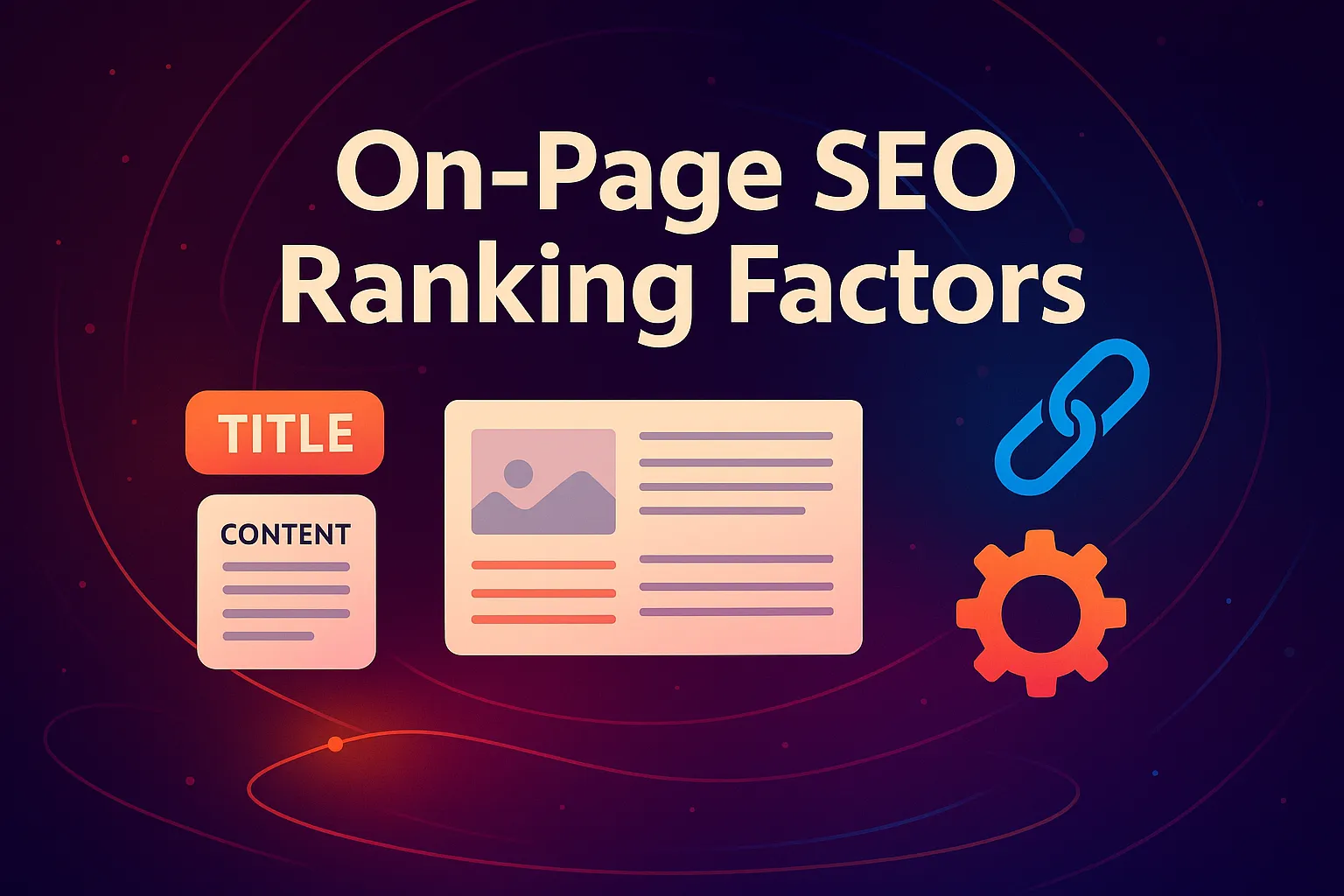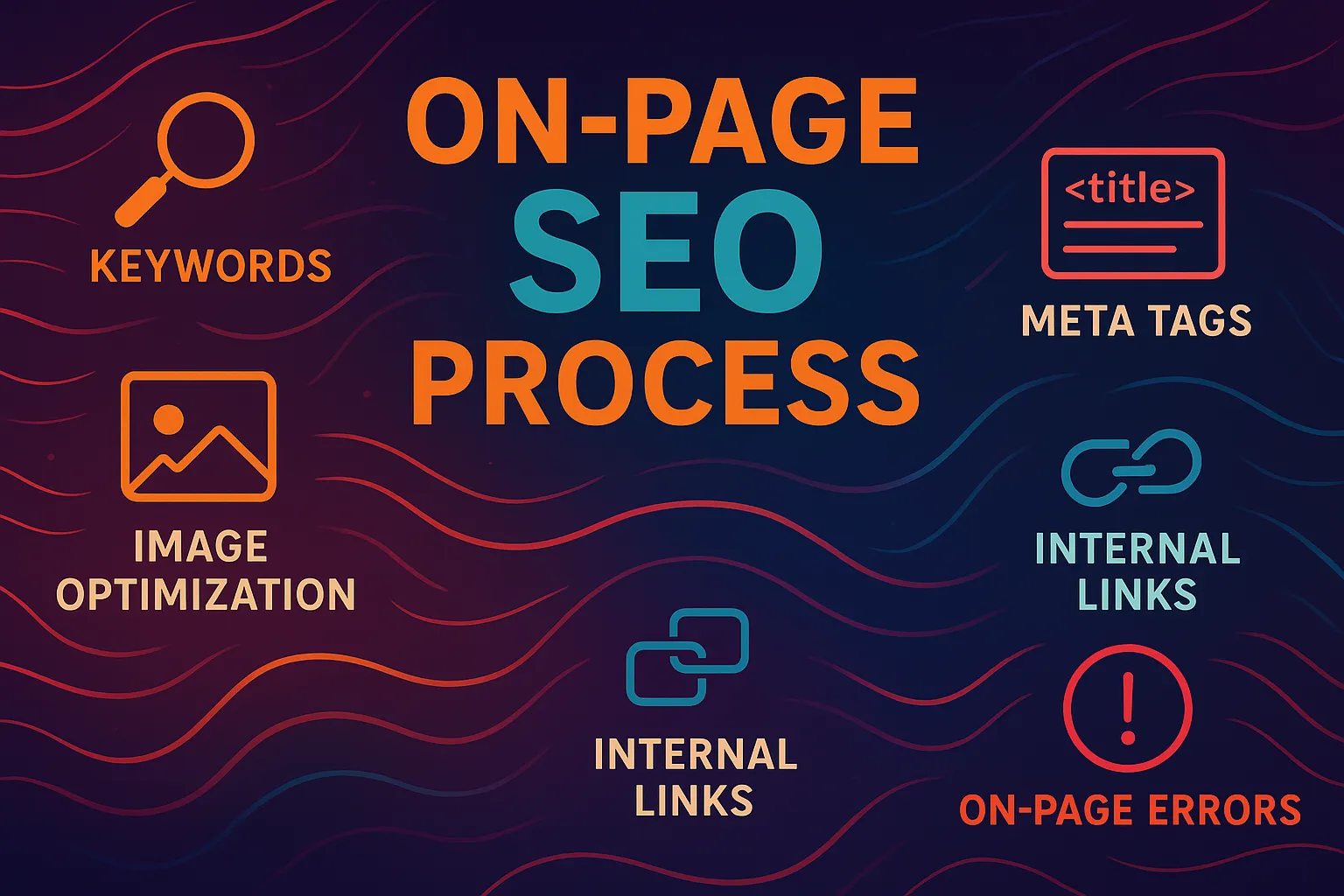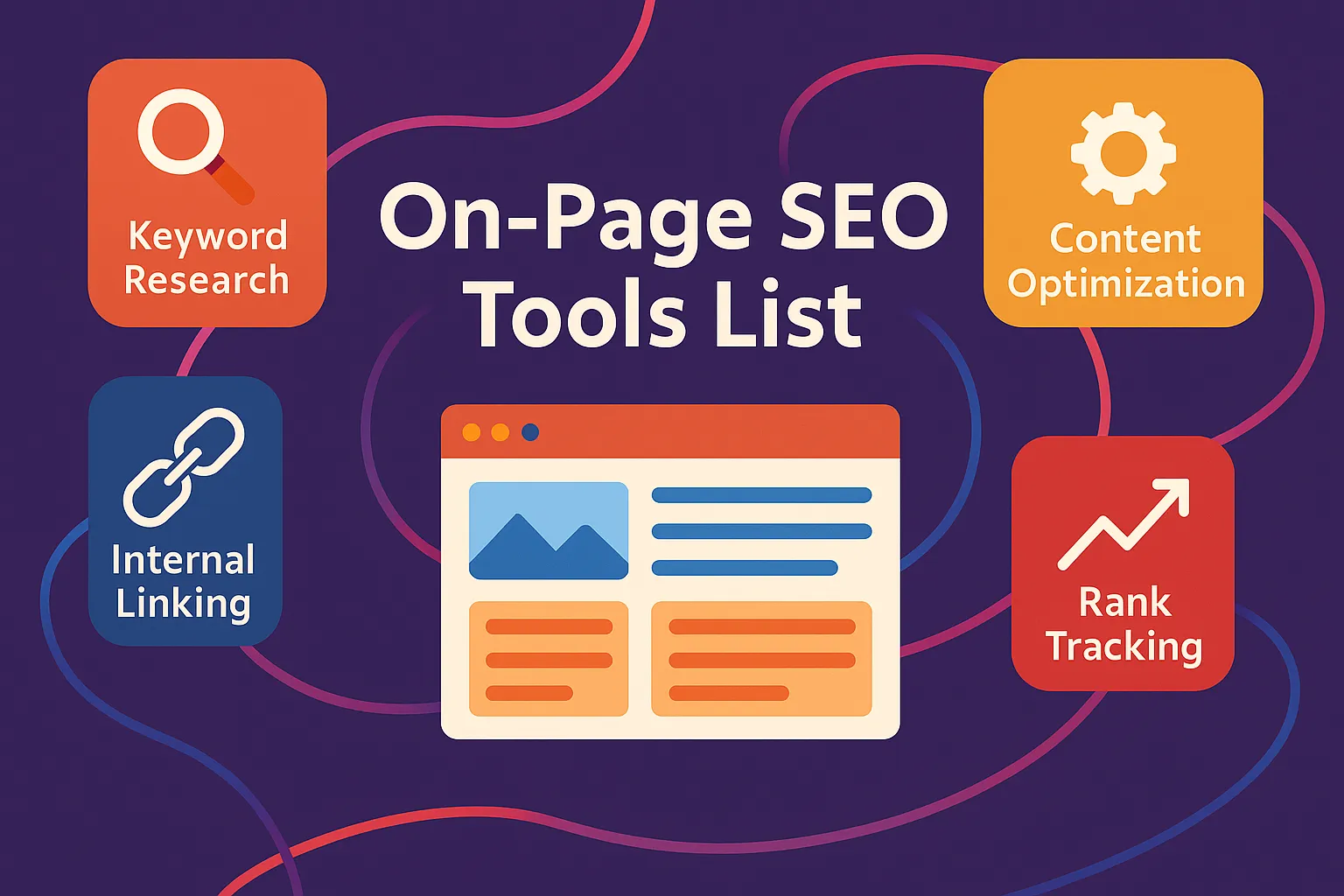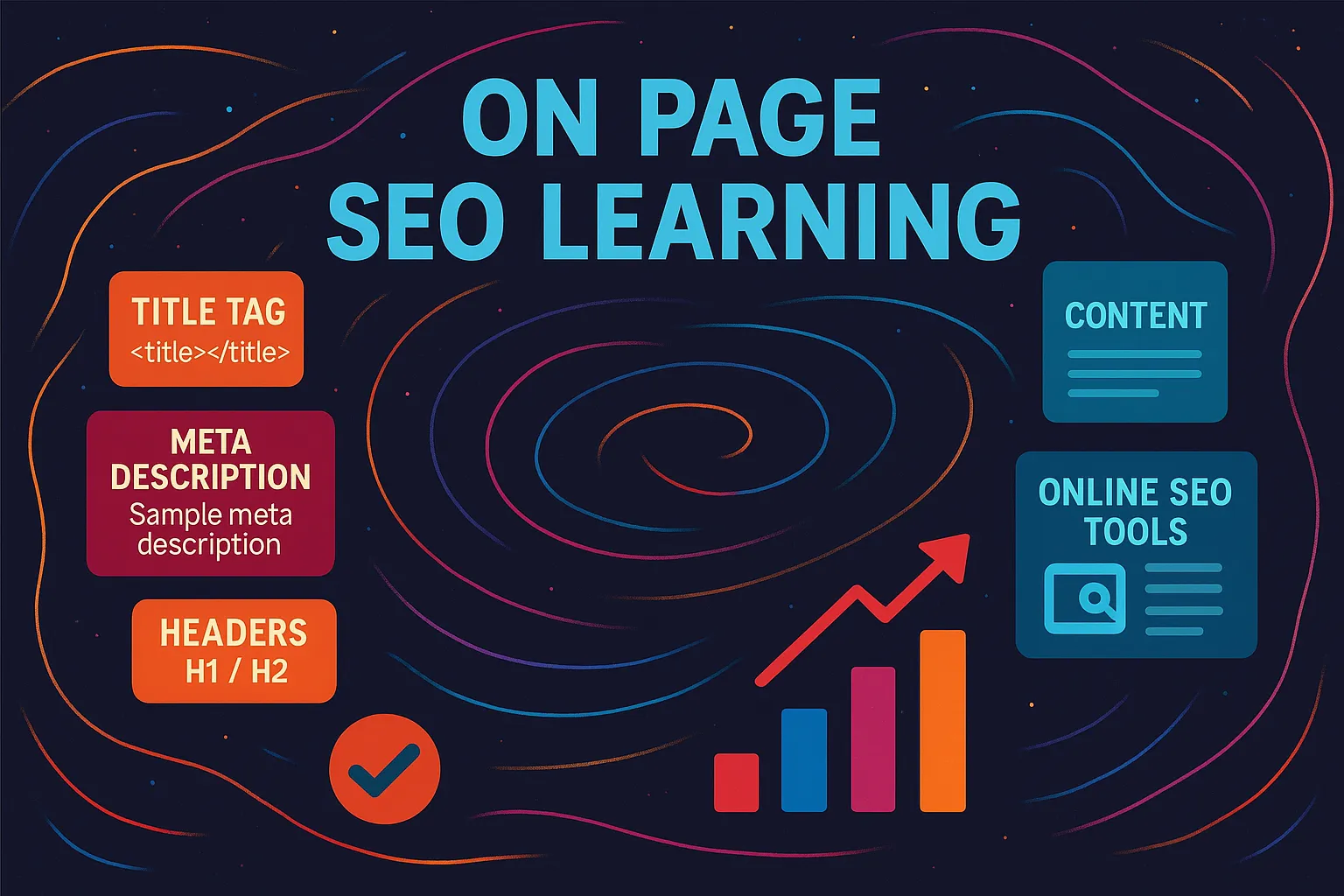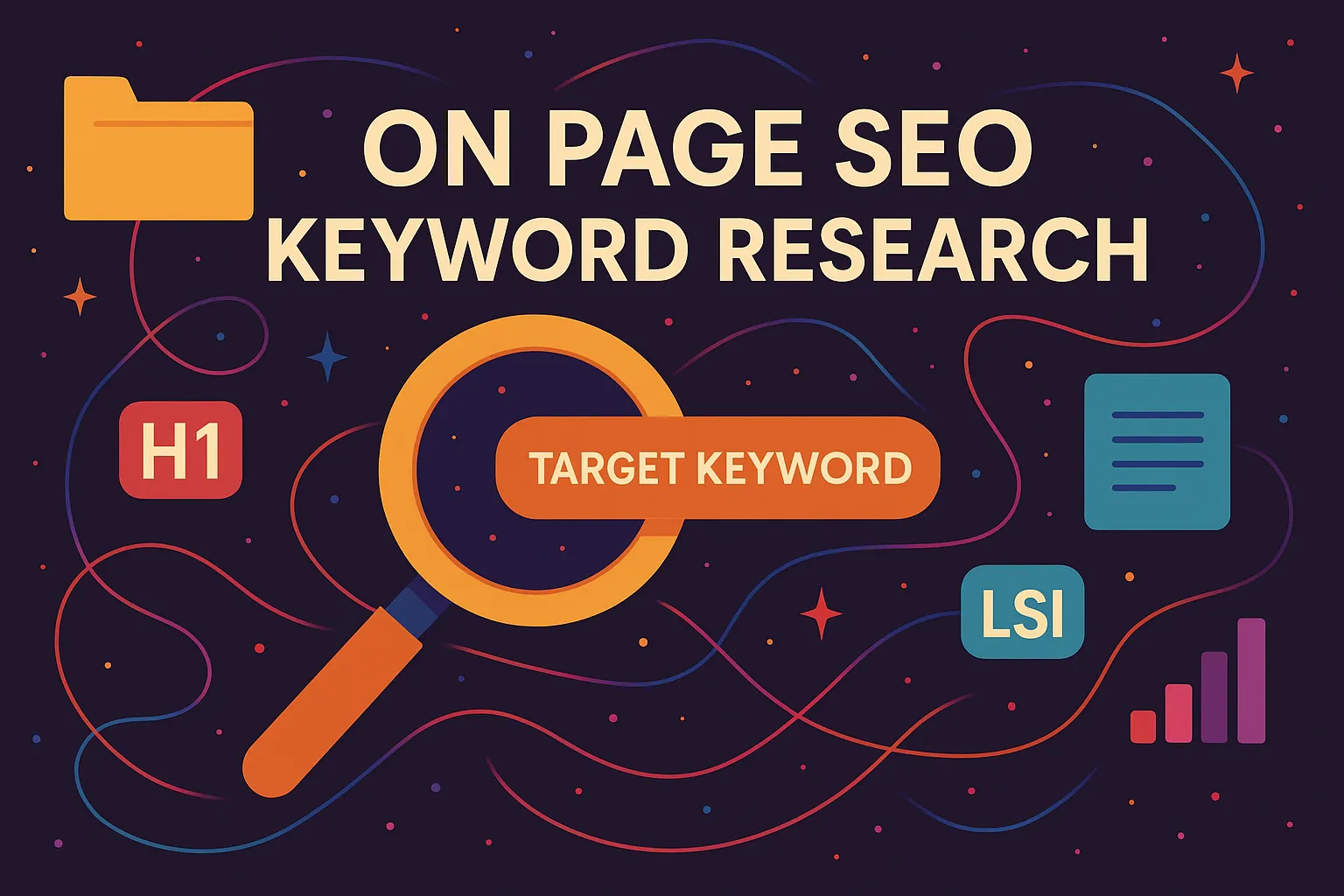What Are On-Page SEO Ranking Factors?
On-page SEO ranking factors are the elements on your website that directly affect how search engines understand your content. This includes the way your content is written, how it’s structured, how fast your site loads, how mobile-friendly it is, and how easy it is for Google to crawl your pages.
Basically, these are the behind-the-scenes things you can control that help Google decide whether to rank your site higher or lower than your competition. At Vibe Branding, we’ve spent over a decade helping brands unlock better rankings by fine-tuning these very signals.
When we first started out, a lot of people thought SEO was just about throwing keywords on a page. But Google has evolved, and now, understanding the full picture of on-page SEO ranking factors is non-negotiable if you want real visibility.
TL;DR (Too Long; Didn’t Read)
- On-page SEO ranking factors influence how well your pages show up in Google.
- We break down the most important on-page elements to optimize right now.
- Learn the difference between on-page and off-page SEO.
- Discover which technical and content factors Google cares most about.
- Understand what E-E-A-T means and why it matters to Google.
- Get pro insights from our 10+ years at Vibe Branding to help your SEO strategy.
Content Signals Google Loves (And Why They Matter)
Let’s be honest—most SEO advice sounds like it came out of a textbook. But over the years, we’ve learned one simple truth: Google rewards content that’s built for people, not just search engines.
When we write content for clients, we focus on showing experience, expertise, and authenticity. Google uses something called E-E-A-T: Experience, Expertise, Authoritativeness, and Trustworthiness.
You might’ve seen this acronym tossed around, but it’s actually a core part of how Google ranks your site. When you show that a real expert is writing the content—someone who’s done the thing they’re talking about—it builds trust with both your audience and Google’s algorithm.
And keywords? Yes, they still matter.
But stuffing them everywhere like it’s 2010 doesn’t work. Instead, we carefully place keywords in the title, the H1, the first paragraph, and sprinkle them naturally throughout the body.
We also add related keywords—think of it like seasoning a dish. You don’t want just salt.
You want garlic, herbs, and flavor, too. That’s where semantically related phrases come in.
One trick we’ve used for years is to create comprehensive content. Not just a 300-word blurb, but a full piece that answers every question a user might have.
The average page that ranks on the first page of Google is over 1,400 words. So don’t skimp—go deep and go wide.
We’ve also found that content that gets updated regularly ranks better over time. Google likes fresh information.
When we rework client blog posts every 6 months, we often see rankings bounce back or climb even higher. Visuals help, too. Infographics, videos, and high-quality images break up your content and make it more digestible.
And don’t forget to optimize them—we’ll touch on that later.

HTML Tags: Small Elements, Big Results
The nerdy part of SEO lives in your HTML—and it matters more than you think. I remember early on, we did a site audit for a client who had no H1 tags at all.
Their content was great, but it wasn’t performing. Once we added structured headings and corrected their title tags, they jumped 15 spots in a week.
First, your title tag is the most important HTML tag for on-page SEO. It tells both Google and users what the page is about.
Use your exact keyword here, like “on page SEO ranking factors,” and keep it under 60 characters. Next up: meta descriptions.
They don’t directly impact rankings, but they influence your click-through rate (CTR). A compelling meta description can double your traffic even if your rank stays the same.
Always match it to user intent and include a call to action. Header tags (H1, H2, H3) give structure to your content.
Think of them like chapters in a book. Google uses these to understand what’s important.
Your H1 should only appear once per page and include your main keyword. And then there’s image optimization.
Every image should have an alt tag that describes what’s in the image and includes a relevant keyword when appropriate. We also make sure our filenames are descriptive (e.g., on-page-seo-chart.png instead of IMG_12345.jpg).
This helps you show up in Google Images, too. One more tip: make sure every internal link you place uses meaningful anchor text.
Avoid using “click here”—instead, link to related blog posts or services using descriptive phrases. This strengthens the relationship between pages and helps Google understand your site hierarchy.
Technical SEO: The Hidden Power Behind Rankings
This is the part most people overlook, but it’s where we’ve seen some of the biggest gains. When clients come to Vibe Branding, one of the first things we do is run a Core Web Vitals audit.
These metrics—page speed, visual stability, and interactivity—are now part of Google’s ranking algorithm. If your site is slow, users will bounce.
If the layout shifts around when someone tries to click a button, they’ll leave. We once improved a client’s LCP (Largest Contentful Paint) score by just 1.2 seconds—and their average position jumped from #12 to #6.
That’s the power of speed. Mobile-friendliness is another non-negotiable.
Since Google switched to mobile-first indexing, we make sure every site we touch is responsive. Whether someone visits from a desktop, tablet, or phone, they need a flawless experience.
Site architecture also plays a big role. Clean URL structures, an XML sitemap, and a simple navigation hierarchy make it easier for search bots to crawl and index your site.
We also add schema markup wherever it makes sense—like for FAQs, products, or reviews. This gives you a shot at getting rich results in Google’s search pages.
Let’s not forget security. Sites that use HTTPS are favored over those that don’t. It’s a small signal, but in a competitive niche, every signal counts.
Here’s a quick comparison table to highlight some of the key technical factors and their ranking influence:
Technical Factor | Why It Matters | Ranking Influence |
Page Speed | Reduces bounce rate | High |
Mobile-Friendliness | Required for mobile-first indexing | High |
HTTPS | Builds trust and privacy | Medium |
Schema Markup | Enables rich snippets | Medium |
Crawlable Architecture | Helps bots understand your site | High |
User Experience Signals (UX) Google Pays Attention To
There’s a reason UX and SEO have become deeply connected. When a page is easy to use, fast to load, and satisfying to interact with, Google takes notice.
One of our favorite success stories came from a fashion eCommerce brand whose bounce rate dropped 20% after we improved their layout and added clearer navigation. Their rankings improved almost immediately.
Google measures metrics like bounce rate, dwell time, and click-through rate (CTR). These are indirect signals of content quality and user satisfaction.
A high bounce rate tells Google that people didn’t find what they were looking for. Low dwell time suggests they left too fast.
Meanwhile, a strong CTR shows your page title and description are appealing. We also design for accessibility.
Clear fonts, contrasting colors, and keyboard navigation options not only help your SEO—they make your site usable for everyone. This inclusivity is part of good UX and aligns with Google’s values.
Reducing visual clutter is key. We’ve seen huge improvements when we cut down pop-ups, autoplay videos, and unnecessary widgets.
Clean, focused design keeps users engaged and signals quality to search engines. One more trick: if your blog has a comment section, encourage engagement.
Google treats active discussions as signs of relevance and authority. A lively comments section can help you hold rank in competitive topics.

Common On-Page SEO Mistakes to Avoid
We’ve seen it all—keyword stuffing, broken internal links, duplicate content. The sad part?
These issues are easy to avoid. One client came to us with a beautiful site that wasn’t ranking at all.
Why? They had the same meta title and description on every single page.
Once we fixed that, their homepage shot up to page one. Let’s start with keyword stuffing.
Repeating the same keyword over and over used to work, but now it gets penalized. Instead, focus on keyword intent and placement.
Use the keyword “on page SEO ranking factors” in strategic places, but don’t force it. Natural language wins.
Duplicate content is another killer. Every page on your site should serve a unique purpose.
If two pages say the same thing, Google won’t know which one to rank—and may rank neither. Internal links matter more than you think.
Broken links create dead ends for users and search engines. We use tools like Screaming Frog to audit every site for link health and fix issues right away.
Also, avoid having too many outbound links in one post. It dilutes your authority.
And make sure any affiliate or sponsored links use the proper tags, like rel=”sponsored” or rel=”nofollow”. Lastly, long blocks of text with no formatting or breaks?
Big mistake. Users skim.
Break things up with headings, bullet points, and visuals. It’s better for readability—and Google agrees.
Best Tools We Use to Optimize On-Page SEO Ranking Factors
Having the right tools makes on-page SEO not just easier—but far more accurate. At Vibe Branding, we’ve built a standard toolkit that we use with nearly every client to audit and improve their site.
We always start with Google Search Console. It’s free and packed with data.
It shows us how pages are performing, whether they’re getting indexed, and if there are any technical issues Google sees on your site. Then we turn to Surfer SEO.
Their content editor helps us dial in keyword usage, check structure, and compare top-performing pages. When a client’s page isn’t ranking and we can’t figure out why—we run it through Surfer and almost always find the missing piece.
For technical audits, we use Screaming Frog. It’s a crawler that shows us broken links, duplicate content, slow pages, missing tags—you name it.
It’s like an MRI for your website. We also regularly use Google PageSpeed Insights and Lighthouse to analyze site speed.
These tools break down everything affecting load times and give you specific suggestions to fix them. And finally, for WordPress clients, tools like Yoast SEO or Rank Math provide helpful real-time analysis right in the editor.
They aren’t perfect, but they’re great for staying on top of basics.
Final Thoughts: Make Your SEO Work for You
At the end of the day, getting on-page SEO right isn’t about chasing every single Google update. It’s about understanding the core ranking factors that actually move the needle and applying them consistently.
We’ve been helping brands do that at Vibe Branding for over 10 years, and it’s still the foundation of every strategy we create. If you want your site to rank well, focus on creating exceptional content, structure it properly with strong HTML tags, and optimize your technical performance.
Pay attention to how users engage with your site, avoid rookie mistakes, and keep improving over time. The keyword “on page SEO ranking factors” should be more than just a phrase you target—it should be the roadmap you follow to create a better site, a better experience, and ultimately, better results.
If you’re ready to build an SEO strategy that actually works, reach out to us at Vibe Branding. We’re here to help you climb the rankings, win more traffic, and make every click count.

